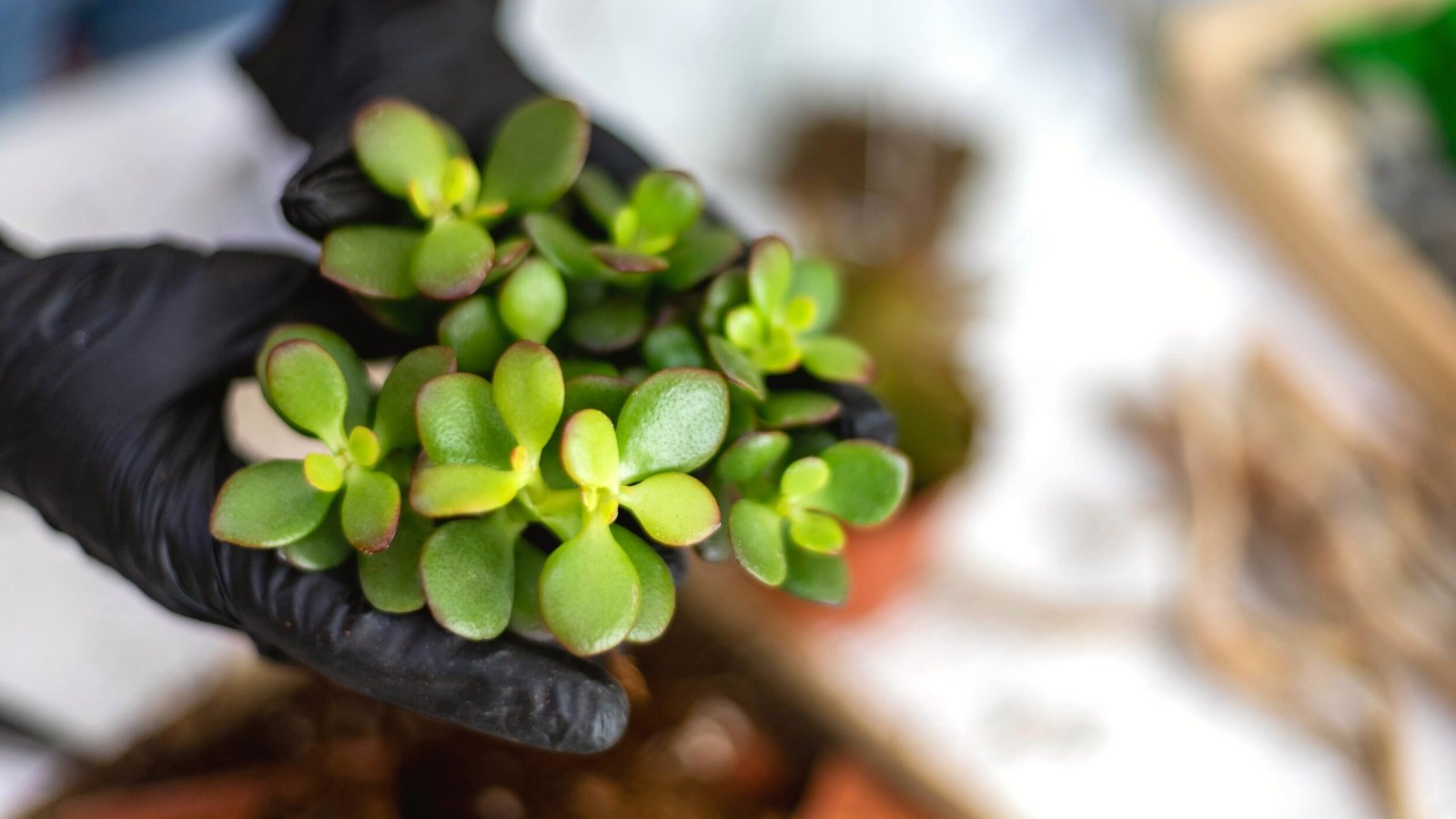Succulents are good, low-maintenance vegetation that I uncover to be a pleasure to propagate and share with my plant-loving associates. As a consequence of their uncomplicated wants, succulents make good newbie vegetation. They’re finest for any plant lover who doesn’t have hundreds time to are inclined to high-maintenance vegetation.
The commonest and worthwhile methodology to propagate succulents is by the tactic of division. Whereas it’s potential to propagate from seeds, it takes for for for much longer to understand mature vegetation. Many succulents don’t have a fantastic germination price, so propagating this trend is probably irritating and time-consuming.
Division will lead to sturdy vegetation that should solely take about one 12 months prior to they’re able to bloom themselves. There are utterly completely totally different strategies of division, so it’s as quite a bit as a result of the gardener to search out out which one works finest for them. Dividing succulents is probably as robust or simple as you select.
The primary and extra refined method I’m going to go over is inclined to offer the strongest divisions nonetheless would possibly set off numerous stress to the daddy or mother plant. In case you’ve got gotten a superb variety of offsets, that is the means by way of which to ensure that the majority of them thrive. The choice method is means a lot much less hectic in your father or mother plant, nonetheless it will not produce as many advantageous divisions.
Let’s dig in and focus on the very best methods to divide your succulents so that you might presumably enhance your explicit individual yard or go a variety of of your lovely vegetation alongside to family and mates.
Shield a Healthful Plant
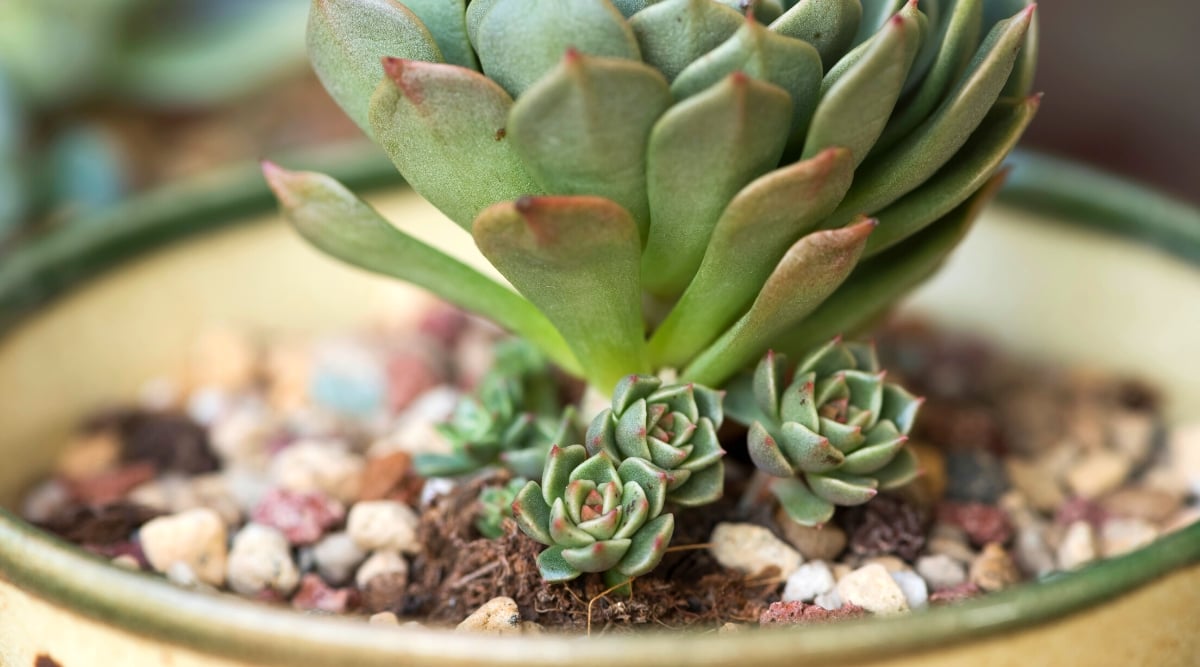

Succulent vegetation are slow-growing. In consequence, they will’t be divided as typically as some faster-growing vegetation. Most succulents produce offsets, creating a simple methodology to propagate so long as you look ahead to the appropriate time.
All through the meantime, you might encourage your plant to offer offsets, or pups, as they’re normally often known as. Healthful, well-cared-for vegetation can sometimes be divided yearly.
A healthful succulent is one which has good coloration. Many succulents let they’re careworn by turning a particular coloration, most incessantly pink or purple. Some plant homeowners induce this slight stress due to the colour shift is fascinating.
A careworn succulent could also be lovely, nonetheless it actually’s quite a bit a lot much less inclined to offer offsets you might divide. If the plant is struggling to take care of its capabilities, it’s unlikely to breed.
Resolve your succulent and perform barely analysis on that plant’s particular wants. Most want publicity circumstances between vivid, oblique delicate to partial picture voltaic. Some thrive finest in full picture voltaic. Temperature is essential, as appropriately. Some succulent vegetation love the warmth, whereas others want additional temperate native climate. Some want little or no water, whereas others ought to be watered recurrently.
Everytime you uncover that your plant is exhibiting indicators of being overstressed, it’s essential to alleviate a variety of of that stress. This will more and more launch your plant to redirect vitality from surviving to reproducing.
Decide Whether or not or not or not the Plant is Robust Ample to Divide
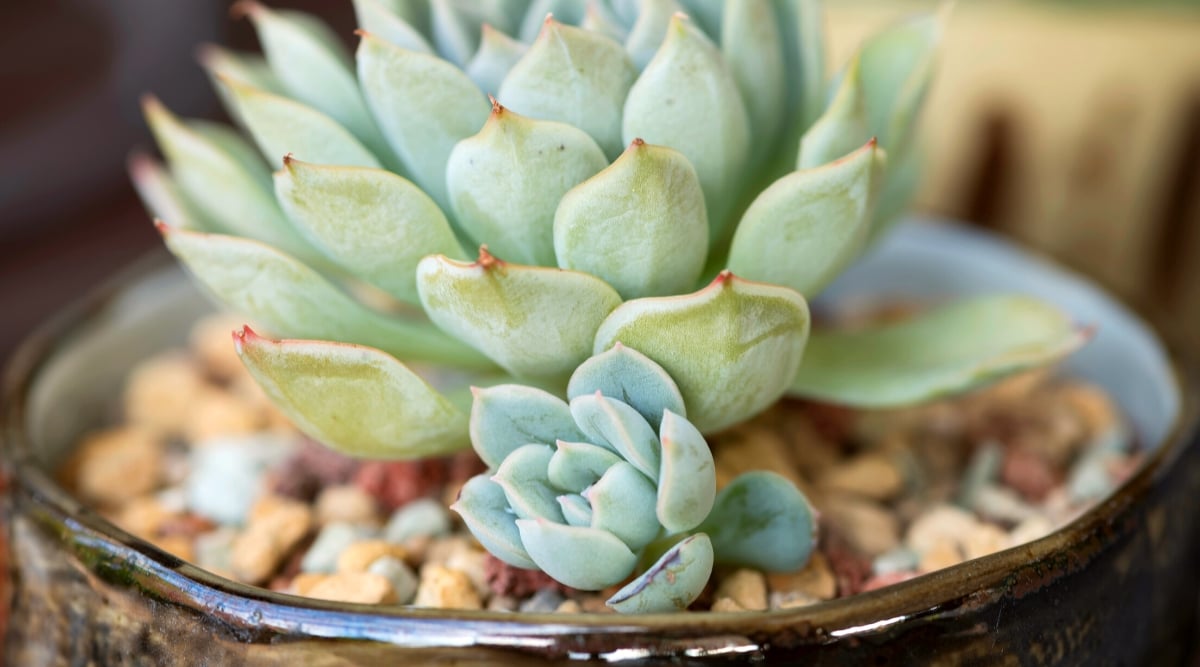

Ahead of getting began, you may want to find out whether or not or not or not or not the plant is able to be divided. Put merely, a plant that has offsets is one which can be divided. Whereas a variety of these vegetation is probably propagated by leaf cuttings, it takes for for for much longer to get a mature plant this trend.
With division, you may have obtained a small copy of the daddy or mother plant that has already developed roots. The offsets are able to divide after they appear to be a miniature model of the mature plant.
Don’t fear that you just’re harming your plant by eradicating the offsets. It’s fairly the selection. The pups are a drain on it. Eradicating them will really launch the plant to make the most of dietary nutritional vitamins and water with out having to assist the pups.
Take away the Plant From Its Container
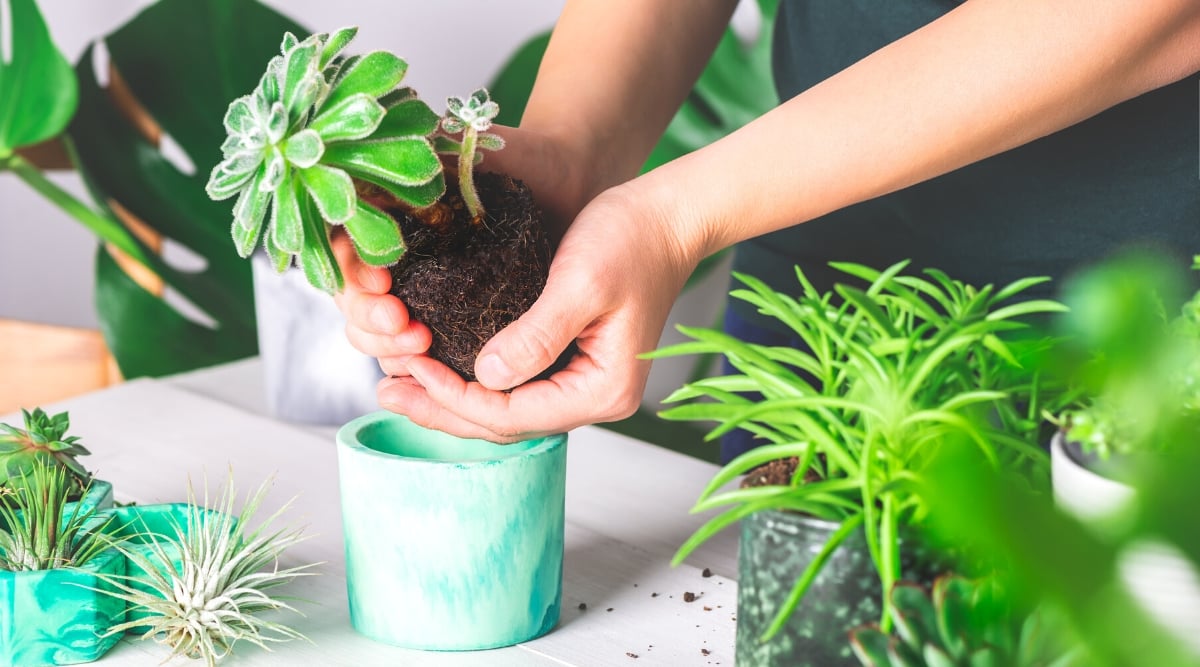

The first step to worthwhile division is eradicating the plant from its container in a technique that doesn’t set off additional harm than wished.
Flip the container on its facet. If it’s plastic, give it barely squeeze in a variety of utterly completely totally different instructions to loosen the soil and make the plant slide out merely. If the container is a non-flexible provides, faucet the edges flippantly within the course of a tough flooring to loosen the soil.
Grasp an essential, strongest a part of the plant on the underside and gently carry all the premise ball and soil out of the container. If the plant doesn’t slide out merely, gently work to loosen it additional. Don’t stress it, in any other case you may harm the fragile roots.
Succulents aren’t notably versatile vegetation, they usually have delicate roots. They’re sturdy and low-maintenance when comfortably established of their container nonetheless is probably highly effective to repot with out breaking off a bunch of leaves.
If the plant is root-bound and on no account popping out of the container, take a skinny metallic instrument or knife and slide it gently down from the sting of the container in a variety of spots to create some motion. If the pot has drainage holes, use a chopstick to supply the roots barely push from beneath. Then, flip the container on its facet and take a look at as quickly as further.
Untangle the Roots
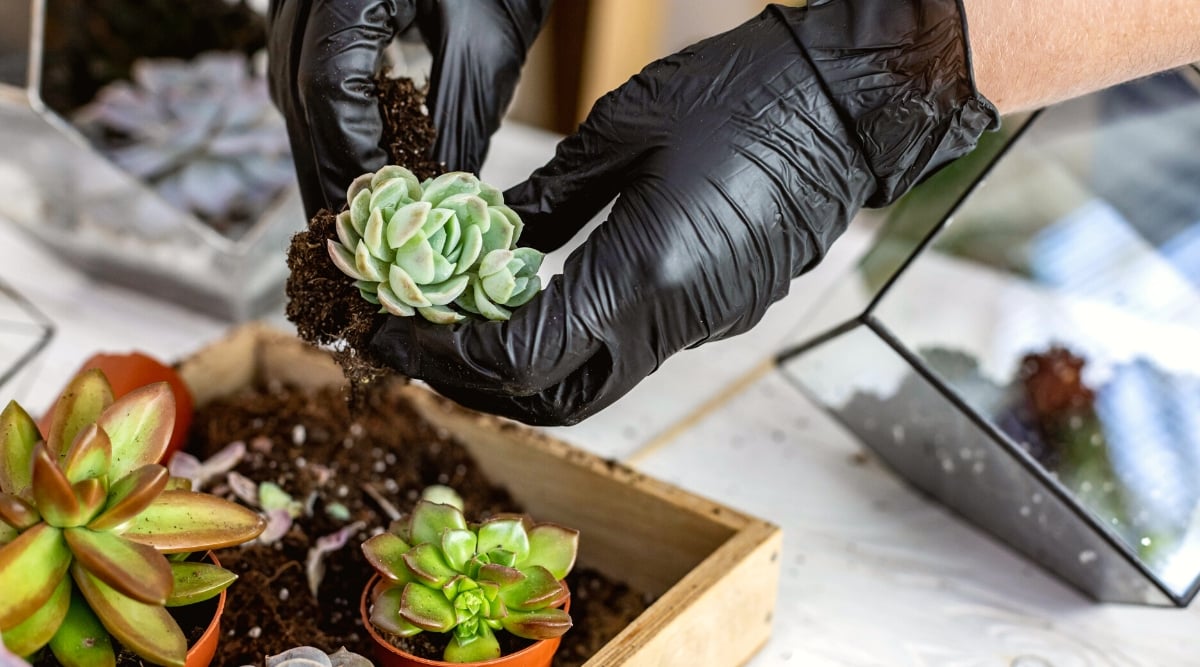

As rapidly as your plant is out of the container, use your arms to softly loosen and shake out as a variety of the soil as potential so that you might presumably see what’s going on on beneath there. You need to see as a variety of the roots as potential so that you might presumably make certain that to take away solely what it is advisable to have the power to assist the divisions, leaving the principle plant sufficient to assist it as appropriately.
Some succulents, like aloe and agave, would possibly produce pups with out roots already customary, nonetheless differing kinds can have roots already forming. Gently separate and untangle the roots associated to the pups from the bigger plant’s root system so that you simply simply don’t cut back into any of them an excessive amount of, and every division has some roots to start out with.
Divide the Pups From the Mother or father
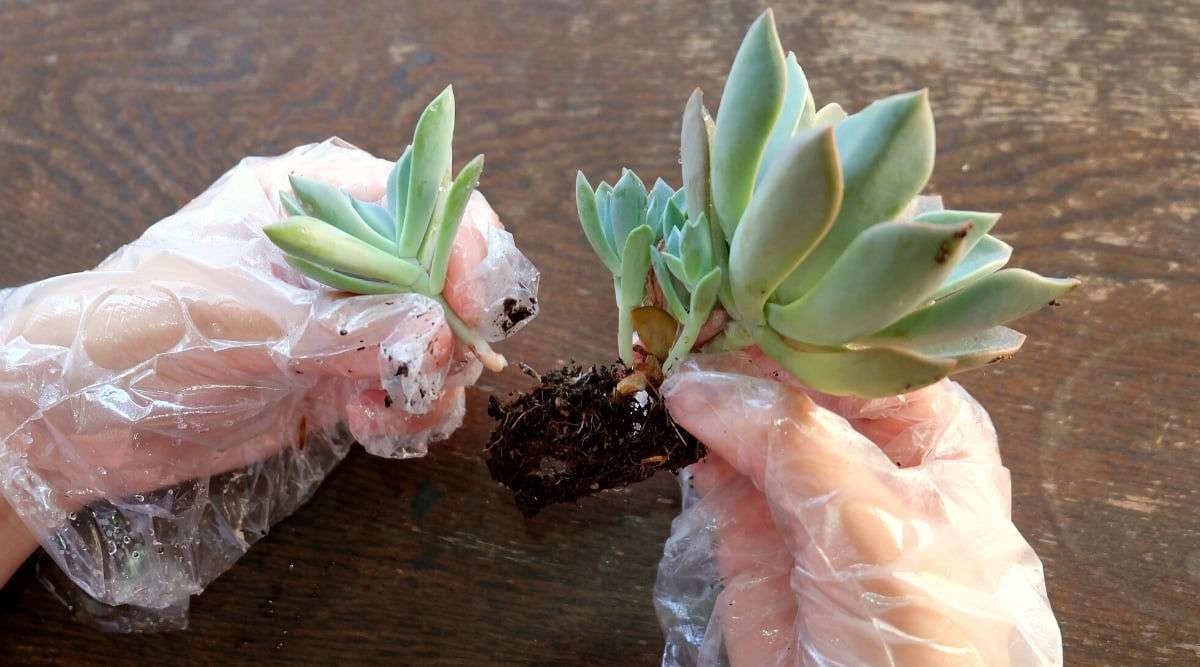

For some succulents, eradicating the pups is as simple as pulling them aside by hand. Some vegetation want additional help contained in the type of a slicing instrument. Lower the pup away, slicing as near the daddy or mother as potential with out damaging it.
You need to go away the principle plant with sufficient roots for it to get successfully from the tactic whereas furthermore giving your divisions the same income. When unsure, err on the facet of leaving roots associated to the daddy or mother, and your offsets should develop their very private roots over time.
Repot the Offsets
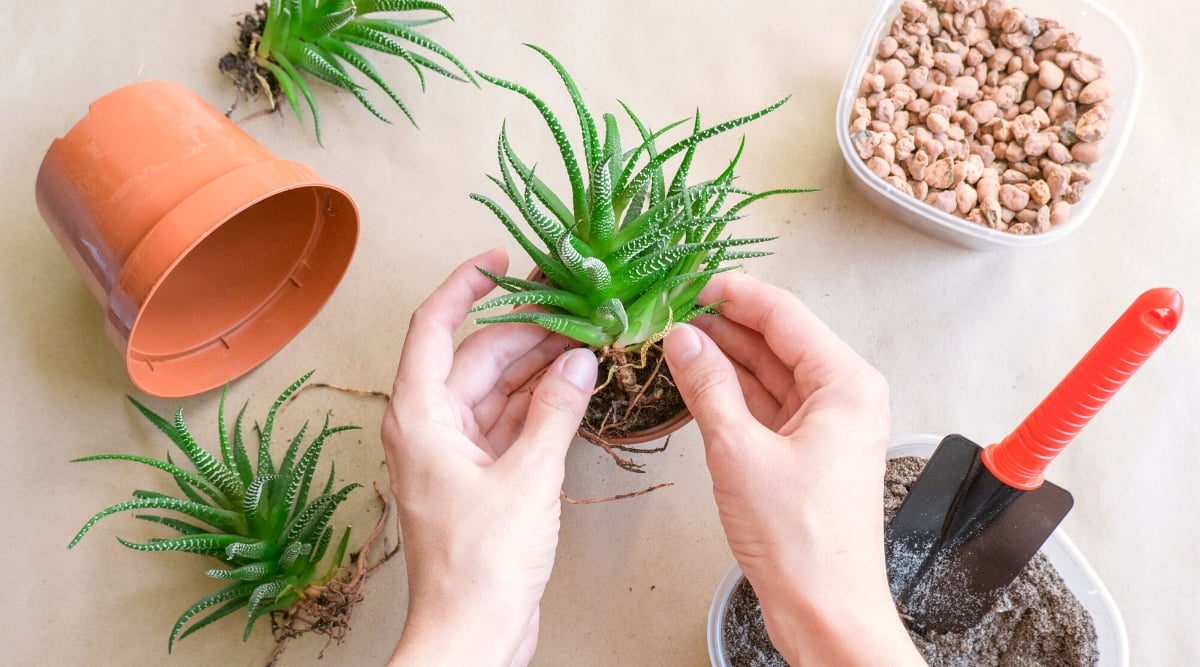

After you’ve divided your pups, it’s time to repot all of them, together with the daddy or mother. Select a container that has fantastic drainage, as succulents do not love damp roots. Their delicate root strategies are inclined to root rot.
Succulents don’t ought to be planted deeply, so start by filling your container about ⅔ of the way in which wherein by way of which full with potting soil. Use a combine that’s made specifically for cacti and succulents, or create one by your self. Succulents want fantastic drainage, so typical potting soil holds an excessive amount of water and ends in circumstances that set off root rot.
To make your explicit individual succulent soil, begin with an unusual potting combine and add coarse gives like sand, perlite, pumice, or vermiculite. Your ratio have to be two elements potting soil to 1 half coarse additive.
Set your succulent divisions on extreme of the soil and cowl the roots completely. Don’t enable the soil to cowl your plant’s leaves, as this may also set off elements with fungal rot.
Repot the Mother or father Plant
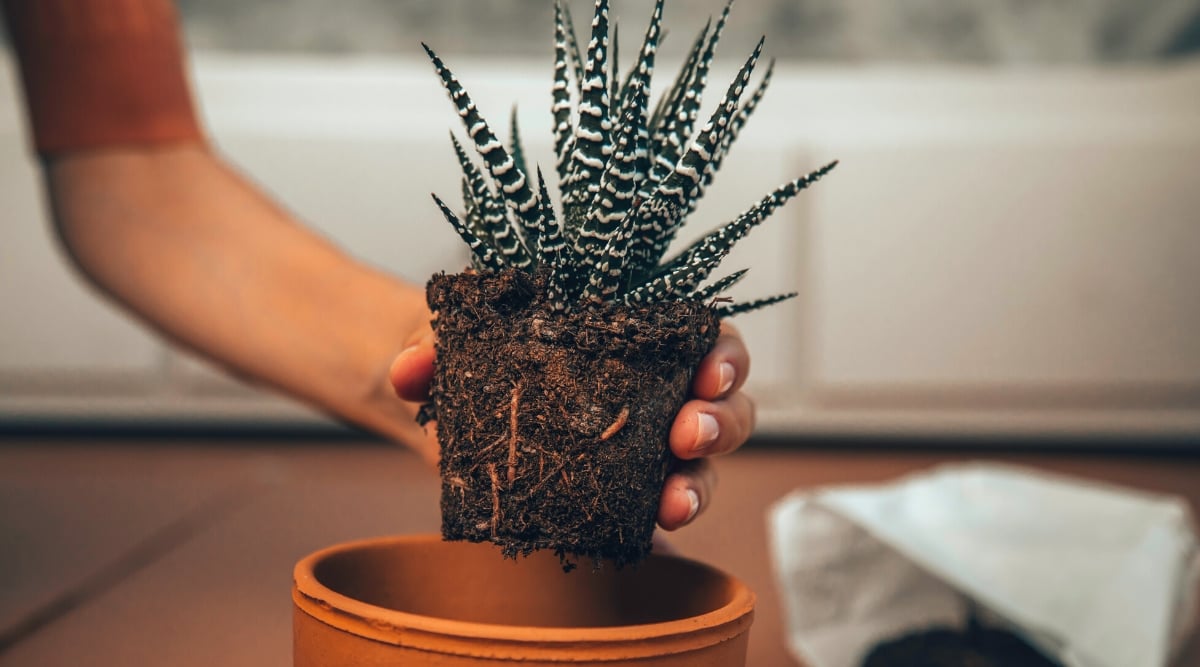

Repotting the mom plant is solely not way more robust than potting the offsets, nonetheless it’s a good suggestion to check out the roots and usually clear up the plant prior to potting. With a clear, sharp instrument, cut back away any root tissue that appears broken.
Rotting root tissue is darkish brown and mushy. It’s essential to take away this, on account of the fungus will develop and have an effect on completely totally different elements of the inspiration system over time, and that can set off full plant lack of life. Likelihood is you may take away any broken or punctured leaves as appropriately due to these leaves are additional inclined to fungus and micro organism.
Alternate Technique
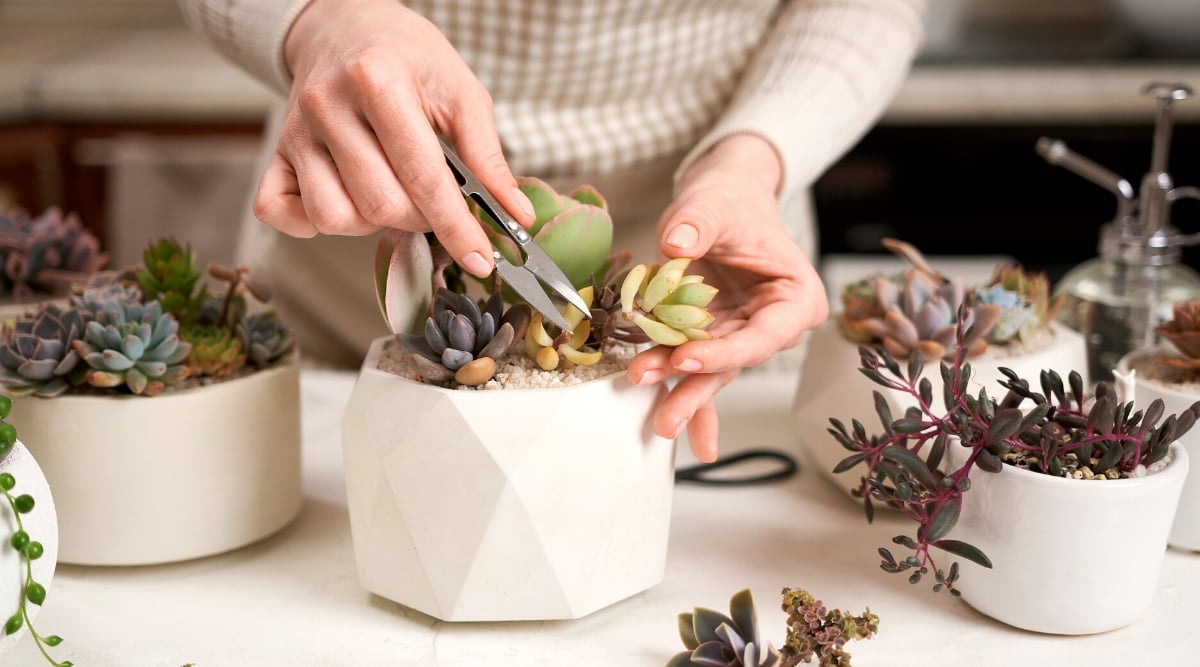

Whereas dividing on the roots would possibly lead to a mature plant additional shortly, it will most likely furthermore set off additional stress to the mom plant. For larger vegetation, that is typically a superior method that preserves their integrity.
An easy technique of dividing succulents is to easily cut back the pups off or pull them aside with out disturbing the roots. Use a pointy knife or instrument to slice off an offset as near the daddy or mother plant as potential, leaving as hundreds stem associated to the pup as you might. This technique works very appropriately on aloe vegetation.
After slicing your pups, dip the size again finish into some rooting hormone to encourage root enchancment. The cuttings should nonetheless develop roots with out the rooting hormone, nonetheless this will expedite the tactic and provide you with a better shot at sturdy vegetation from an early stage.
Lay these pups on a tray or in a basket in order that the size again finish is uncovered to the air, and permit it to dry and heal over that cut back finish prior to potting it. You might too put your slicing instantly proper right into a mannequin new container with soil and abstain from watering it for every week or two to permit that wound to heal over. Every method works, nonetheless you may want to permit that cut back to selection a scab of types to maintain up out dangerous pathogens.
Ultimate Ideas
Dividing succulents is a simple course of, nonetheless it actually requires some finesse and gentleness to keep away from damaging their delicate roots and foliage. With some endurance and barely additional care, it is important to have healthful divisions in a variety of quick months which can be appropriately on their methodology to being mature vegetation.
